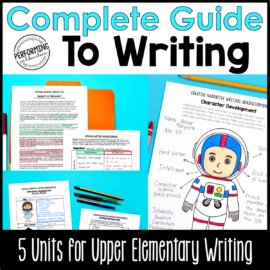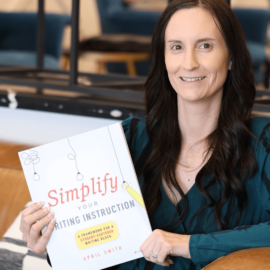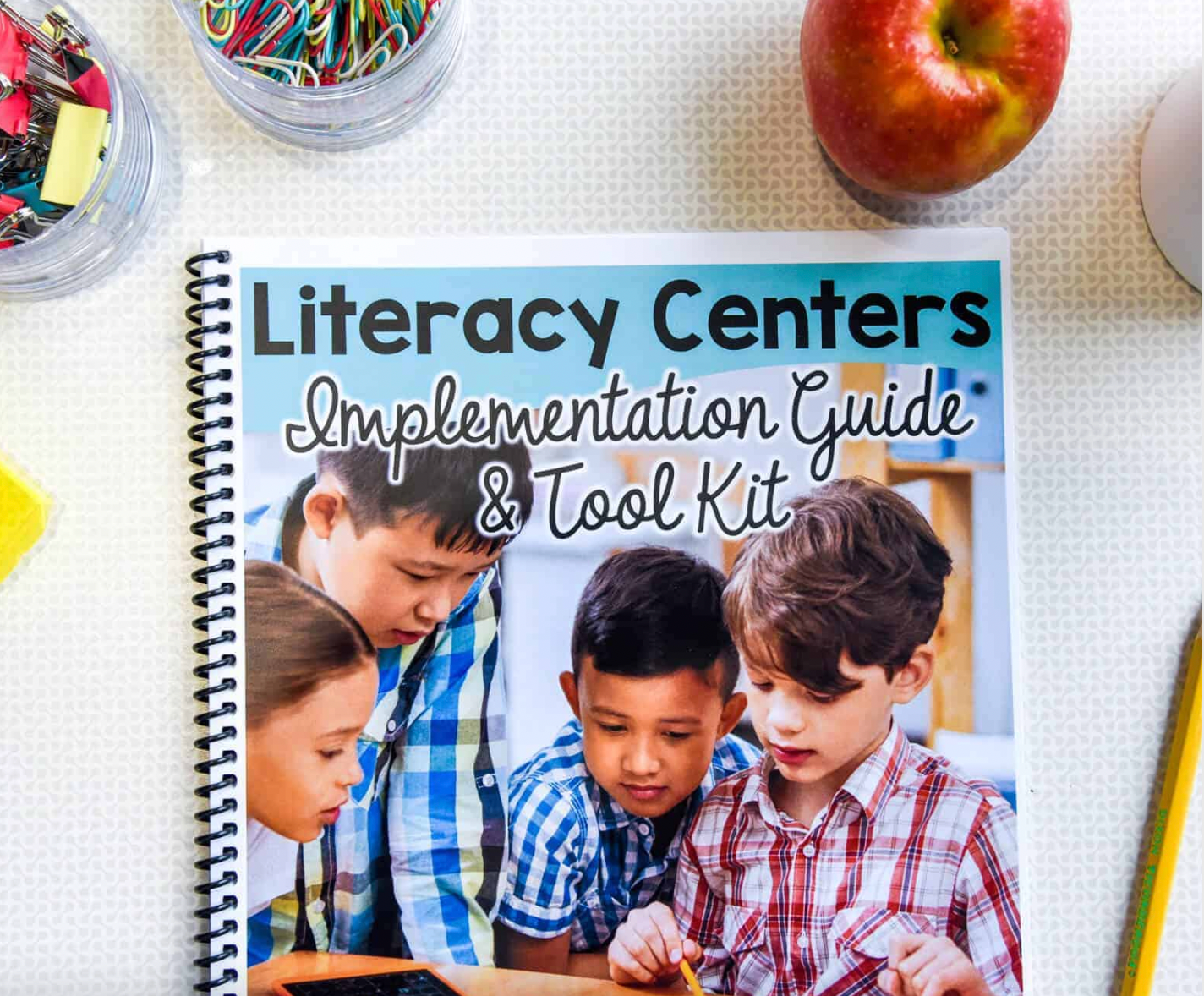Using creative narrative mini-lessons is a great way to teach students about small tidbits of writing without overwhelming them. These sessions are 10-15 minutes long, which is the perfect amount of time to engage elementary students without them losing interest. In my post about Writer’s Workshop, I stress the importance of teaching writing through mini-lessons.
Need writing lessons that reach all of your writers? The lesson I feature in this post is a part of this ⭐⭐⭐⭐⭐ lesson plan bundle.
Here are the 5 creative narrative mini-lessons you MUST teach!
Character Development
Your students all know about character traits, right? Build off of this knowledge to talk about character development in your creative narrative. Character development occurs when the author writes character actions or dialogue that gives us clues about the character’s traits, interests, and background.
In this creative narrative mini-lesson, students spend time during brainstorming coming up with a strong lead character, who happens to be an astronaut on the international space station. We use this brainstorming to help us write our rough draft, which includes character development. This is a great organizer to use after your mini-lesson to help students develop their main character.

Setting Development
It’s imperative to teach your students to develop their setting using descriptive words and phrases. Put up photos of different places and have students come up with words and phrases to describe them. Let them orally share with a partner as if they were introducing the place to someone that has never seen it. Have students close their eyes and describe a setting to them, then have them draw a picture of how they saw the setting in their mind. There are so many fun ways to teach setting development in a 10-15 minute mini-lesson!
Sequence of Events
Your students will probably remember the sequence words they’ve learned in past grade levels: first, next, then, last, etc. This creative narrative mini-lesson is a great time to reintroduce those words to show that a creative narrative has a sequence of events. Give them an example mentor text and then have them retell the story using these sequence words.
I’ve made a easy bookmark (included in the freebie above!) with these words that students can pull out if they get stuck. I’ve found that they are much more likely to use a bookmark as a resource than turn to a page of notes in their notebook – crazy, right?

After you retell the sequence of events using those order words, change those words to stronger transition words. My favorite list of transition words can be found here.
First Immediately
Next By Now
Then Meanwhile
Finally Ultimately
After this mini-lesson, I send my students back to their seat to independently create a sequence of events for their own creative narrative. I encourage them to use transition words and we continue to work on these throughout our rough draft and revision stages.
Dialogue
Dialogue is one of the most important pieces of a creative narrative. It’s also one of the most difficult for students. I’ve often found myself asking, “Why can my students identify dialogue so easily, but they can’t write it correctly?” It’s all about practice, which means they need to be writing a lot of dialogue!
For this creative narrative mini-lesson, give students the rules to writing different types of dialogue. They’ll need to know how to:

- Make a new line of dialogue every time a new speaker talks
- Use quotation marks around the words being spoken
- Choose a fitting dialogue tag or attribution
- Use the appropriate punctuation depending on whether the tag is at the beginning, middle, or end of the dialogue
Strong Endings
Students really struggle with how to write a good, strong resolution to their story. You may notice that many of their stories either abruptly end, or end with “and that’s what happened” or “the end.” Teach your students about how experienced authors end their stories. Grab an ending or two from one of the short stories your class has read this year. Analyze the ending with your class during your mini-lesson and brainstorm the different parts of a strong ending.

Creative narrative writing can be so much fun, and using these 5 mini-lessons will turn a basic story into a rich, delightful tale!




